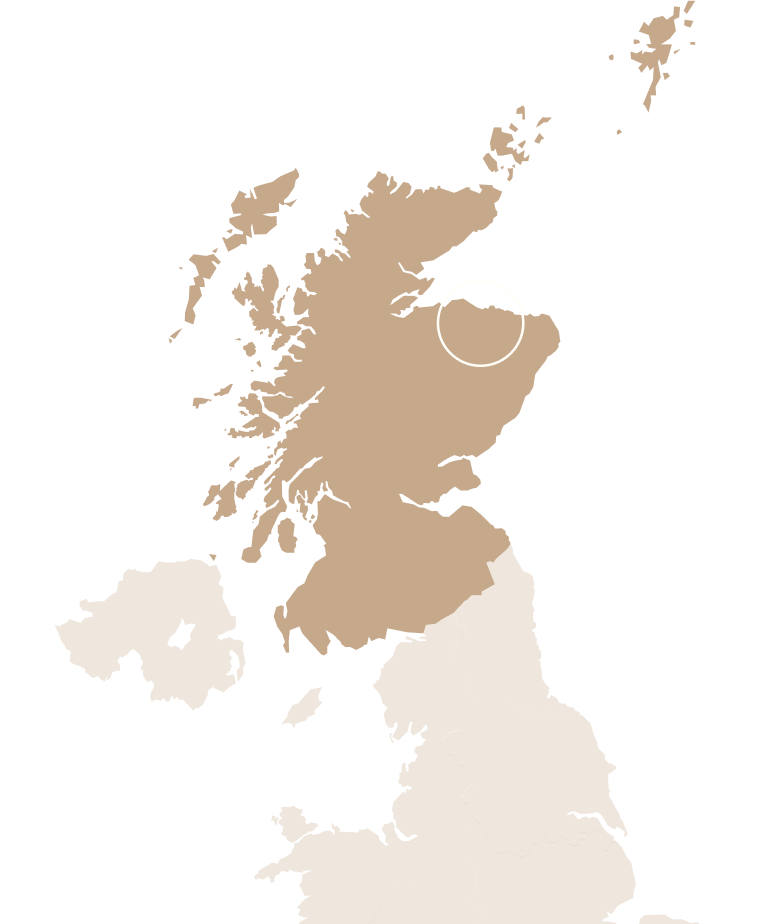A bit of history
Miltonduff was founded in 1824 by Andrew Peary and Robert Bain. They obtained a Licence to Distil following the introduction of the Excise Act by the UK government in 1823. The site to the southwest of Elgin had previously been home to a small illegal distillery named Milton. This name remained in the early days until the Duff family purchased the site and began running the distillery – they changed it to Miltonduff.
A couple of changes of ownership take place over the next century. A key one was Thomas Yool & Co. They took control in the mid-1890s and owned the distillery for over 40 years. However, their significant role was to sell Miltonduff to Hiram Walker in 1936. Hiran Walker transferred all operational and administration to George Ballantine & Son, a whisky distiller and blending house that they had recently acquired. This saw the beginning of the distillery’s association with the Ballantine’s blend, which remains key to the distillery today.
Miltonduff underwent a major reconstruction in the 1970s and this is the distillery that can be seen today. In the mid-1980s, all Hiram Walker assets including George Ballantine & Sons and Miltonduff, were purchased by Allied Lyons. They changed their name to Allied Distillers with the purchase, and later Allied Domecq. Chivas Brothers, the whisky wing of Pernod Ricard, acquired Allied Domecq in 2005 and remain the current owners.
A blenders malt
Single malt bottlings from Miltonduff are few and far between. The reason being that most of the spirit distilled there is destined for blends. This allocation leaves very little for release as single malt. The majority is used by Chivas Brothers as a key ingredient in their popular range of Ballantine’s blended Scotch whiskies. Miltonduff is also used within other famous blends such as Chivas Regal.
What makes Miltonduff so perfect for blending is its soft, gentle and fruity nature with a hint of peppery spice. This marries perfectly with more expressive single malts within a blend and adds consistency, structure and depth.
The geeky bit
Miltonduff has a current annual capacity of 5.8 million litres. This makes it one of the larger distilleries in the Speyside region. It is equipped with an 8-ton copper-domed mash tun and 16 stainless steel washbacks. They operate a fermentation time of 56 hours. There are six large pear-shaped stills, and these produce a light, creamy and fruity spirit. Much of the spirit produced is then matured in ex-bourbon barrels.
Plans to expand Miltonduff have been recently announced by Chivas Brothers. Several warehouses on the current site will be demolished to accommodate the new distillery, which will cost an estimated £80 million. This will be with equipped with 20 stills, which will be replicas of the current ones, and grow the capacity to 16 million litres per year. This will make Miltonduff the third largest single malt distillery in Scotland, behind only Glenfiddich and Glenlivet.
One to buy | Miltonduff 15 years old
This is one of the few bottlings of Miltonduff made available by Chivas Brothers. Other releases, especially the occasional single cask, can also be found through independent bottlers. This 15 years old expression sits within the Ballantine’s Single Malt Series, which highlights four key distilleries that are essential to making the famous old blend what it is – the other three are Glenburgie, Glentauchers and Scapa.
Expect toffee apple, citrus peel and heather honey on the nose and then vanilla fudge, poached pear and butterscotch sauce on the palate. Late hints of gingerbread, clove and liquorice add depth and complexity. A delicious and classic example of what Speyside single malt should be.
To find out how to invest in your own cask of Miltonduff whisky, get in touch with one of the Whisky 1901 team.




